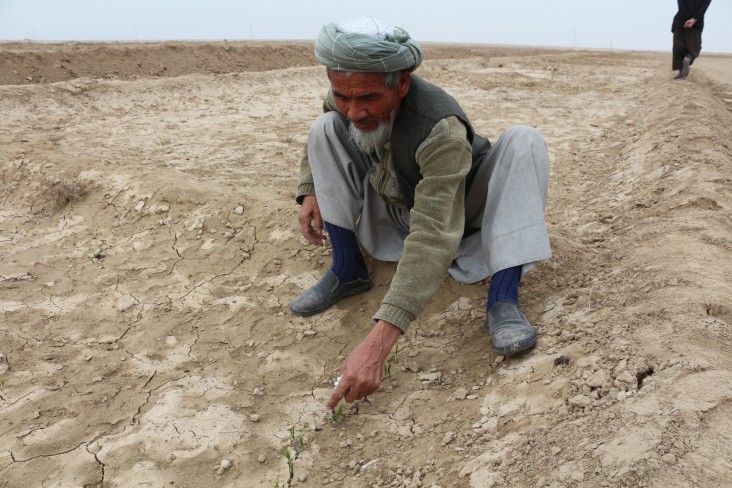Speeches Shim

Imagine being a farmer with limited usable land trying to feed a growing family of 45. That was the daily pressure weighing on Haji Abdul Rahman, an 80-year-old farmer in Jowzjan Province, Afghanistan. He says his problem was not insufficient land, but his inability to level it so that it could be used for planting.
“I was using traditional techniques and animal power, but I couldn’t level all of the land (32 jerebs / 6.5 hectares). Or, I had to pay 600 AFN ($7.6) per hour for a tractor… which is far beyond my economic capacity,” he explained.
Rahman says that half of his land was not being used, and he was struggling to provide even two meals a day for his family.
The USAID Strengthening Watershed and Irrigation Management (SWIM) project offered Rahman a solution. Working closely with the Jawzjan Directorate of Agriculture, Irrigation, and Livestock (DAIL), USAID provided equipment to level Rahman’s property. The project used a stationary laser that communicates with a leveler pulled by tractor to maintain a consistent plane and automatically adjust to the terrain. The process ensures a more even distribution of irrigation, decreasing water loss and ultimately, increasing yields.
Rahman says the assistance gave him options. “I was thinking about my next plans, what to do and what to cultivate since it was the first time I had most of my land leveled,” he explained.
Rahman planted wheat, corn and saffron, using saffron seedlings provided by the DAIL. Saffron is a high-value crop with great potential for alleviating the financial pressure on his family. In fact, the farmer says he intends to plant all of his land in saffron next year.
“I am sure that after five years, I will be able to pay the next land leveling out of my own pocket,” he said.

Comment
Make a general inquiry or suggest an improvement.